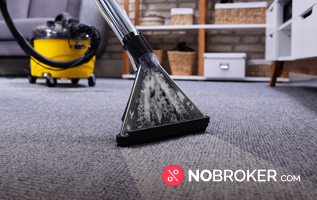NoBroker Home Cleaning Starting Rs. 359.
 Best Price!
Best Price!
 5-Star Rated Partner!
5-Star Rated Partner!
 Free Cancellation!
Free Cancellation!
 Top Quality Chemicals
Top Quality Chemicals
 Professional Equipments
Professional Equipments

BOOK NOW

BOOK NOW

BOOK NOW

BOOK NOW

BOOK NOW


How to Remove Caulk Residue?
Dishu Mishra
✔In Progress
👁103
Views
May 20, 2022
2022-05-20T20:36:03+00:00 2022-06-01T16:49:12+00:00Comment
1
Answers
Cleaning
Share